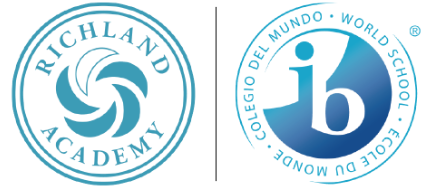Malaguzzi has said, “Our goal is to build an amiable school, where children, teachers, and families feel at home.” How do we accomplish such a feeling of home within our school? Homes are warm, safe and nurturing to our needs. We enjoy being ourselves within our homes because of the roots and the sense of security we feel within our homes. We spend years building relationships within our homes; relationships with each member of our families, relationships with the materials and relationships with the overall environment/atmosphere within our homes. For children, relationships allow them to feel a sense of belonging. Within the classroom, we have purposefully created an atmosphere that is nurturing to each child’s needs; by creating warm and loving relationships that invite them to feel safe to explore freely, by creating enriched and homelike environments that support their academic, social and emotional development, and by creating a space that echoes the learning goals of the work space, interests and age of the students who learn there. By enhancing their relationships within the classroom, the children are being supported within their abilities to connect to the world around them.  Through exploration, the children have gained a sense of ownership of their desires to form relationships beyond what we created ahead of time for them. As educators, we can only hope to generate a copasetic environment that encourages each child to have a feeling and sense of belonging. However, creating an aesthetically pleasing “blueprint” is what we created for us versus the children. The children showed us that they would take control of the inquiries through their own natural curiosities and theories. We had to open our eyes and acknowledge these theories before we could foster and honour our children’s relationships within the classroom. What spaces worked, what did not work, and what materials were purposeful and conducive to learning and meeting student’s developmental, emotional, and academic needs? Creating a discovery centre, ahead of time, in the corner of our classroom left our children uninterested and unappreciative to nature and it’s theoretical possibilities. Re-creating our discovery centre in the lobby, where each wall is created with a window that invites children to discover nature openly and uninterrupted, now fosters each child’s ability to create an environmental relationship with nature. Our children are now beginning to examine, inquire, and generate their own provocations based on their visual perceptions of the world we live, breath, and grow within.
Through exploration, the children have gained a sense of ownership of their desires to form relationships beyond what we created ahead of time for them. As educators, we can only hope to generate a copasetic environment that encourages each child to have a feeling and sense of belonging. However, creating an aesthetically pleasing “blueprint” is what we created for us versus the children. The children showed us that they would take control of the inquiries through their own natural curiosities and theories. We had to open our eyes and acknowledge these theories before we could foster and honour our children’s relationships within the classroom. What spaces worked, what did not work, and what materials were purposeful and conducive to learning and meeting student’s developmental, emotional, and academic needs? Creating a discovery centre, ahead of time, in the corner of our classroom left our children uninterested and unappreciative to nature and it’s theoretical possibilities. Re-creating our discovery centre in the lobby, where each wall is created with a window that invites children to discover nature openly and uninterrupted, now fosters each child’s ability to create an environmental relationship with nature. Our children are now beginning to examine, inquire, and generate their own provocations based on their visual perceptions of the world we live, breath, and grow within.
During our initial months in the classroom, relationships within the classroom were an important aspect of our daily routines; this enhanced student learning by allowing collaboration to occur for each child. The children built a sense of respect for one another; they encompassed one another’s ideals and thoughts into their own, and invited us into their relationships…ultimately showcasing their sense of placement within the classroom. As comfort levels grew in the classroom, so too did the freedom to think deeply about evolving questions; such as, “why can I not see out of the window?” “The dew feels new.” or “what is that smoke outside?” These questions helped to launch our next stage in developing our relationship within our “amiable school”. Bringing the outside in was an eventful and purposeful inquiry that we are still thinking about; yet it has led us to our next layer in the social/emotional ownership of exhibiting an “amiable school”. Where do we fit in, within Richland Academy, outside of our classroom walls? How can the children obtain a sense of home and family connection throughout the school, its student population and its evolving learning spaces? If we can extend our learning and welcome these questions then we can begin to inspire our children to take ownership over creating their “home” outside of their homes within Richland Academy. Our curiosity has led us outside of our classroom walls. An initial creation of a “path that leads us to the ‘new’ school”, prepared us for what is to come. The children want more! We’ve incorporated the ‘safe’, we have shown each child the ‘warmth’ within the classroom, and now we are endeavoring to fulfill the need to belong. Through the imaginary and representational paths of where the children are yearning to be taken, probing of questions, exploratory walks, and through the extension of our learning environment into the lobby, where the snail eggs are being kept (JK classroom), the piazza, and “the big long hallways” throughout Richland, we are embarking upon developing a sense of ‘home’ within Richland and that is standing side-by-side with the entirety of the schools population. Where will our newest relationship take us?
Our curiosity has led us outside of our classroom walls. An initial creation of a “path that leads us to the ‘new’ school”, prepared us for what is to come. The children want more! We’ve incorporated the ‘safe’, we have shown each child the ‘warmth’ within the classroom, and now we are endeavoring to fulfill the need to belong. Through the imaginary and representational paths of where the children are yearning to be taken, probing of questions, exploratory walks, and through the extension of our learning environment into the lobby, where the snail eggs are being kept (JK classroom), the piazza, and “the big long hallways” throughout Richland, we are embarking upon developing a sense of ‘home’ within Richland and that is standing side-by-side with the entirety of the schools population. Where will our newest relationship take us? 










